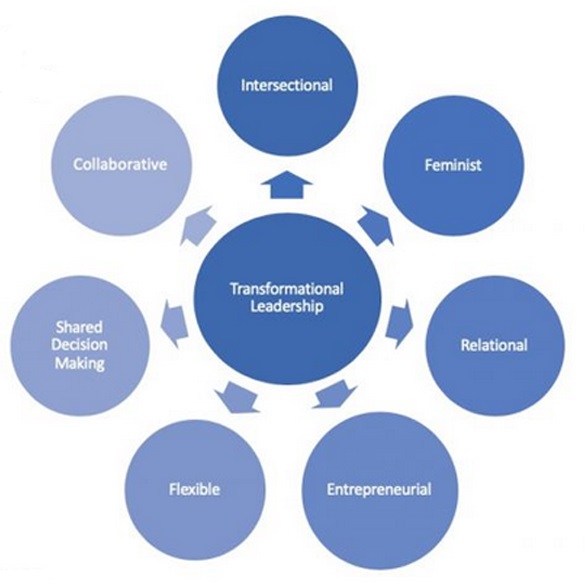Even before the pandemic, there was heightened attention toward early childhood as calls for public investments in care and education were being heard. Politicians, policy makers, pundits, and journalists discussed the burden of high costs of child care and preschool for families, issues around pay inequities among the workforce, and the financial stress many providers face in their efforts to keep their programs open. In addition, more people started to recognize the importance of giving children greater access to “high quality” early learning experiences to promote their well-being. Then the world turned upside down.
The ripple effect of the COVID-19 public health crisis has greatly impacted the early care and education community as programs/schools had to shut down and are now facing significant financial hardships. Consequently, many programs may not be able to reopen. Care and education providers are experiencing emotional and collective trauma, stress and anxiety, and are uncertain about what their futures hold. Yet, as states across the U.S. contemplate reopening businesses, work places, and parents/family members return to work, questions about who will care for children are on a lot of people’s minds. Programs have to survive, and early care and education providers are stepping up, as they always do. And now instead of focusing on different aspects of quality improvement, developmentally appropriate practices, or things like kindergarten readiness, more immediate needs are being prioritized. How do programs reopen and stay open with reduced enrollments? With new safety measures in place? With increased costs because of the need to purchase Personal Protection Equipment?
The pandemic has brought the early childhood community to a critical juncture. With all of this happening, one has to wonder, to what extent are people asking questions around who is caring for or who will care for care and education providers? How can different views on leadership influence change?
It is time to take down the hierarchical structures that have enabled leadership to be narrowly defined. Our views of leadership can be expanded so that it is not just directors, principals, district administrators, elected officials, and others in power who are among those on top. There are a number of people in our field who are innovators, change agents, and visionaries for early childhood that are not often recognized for their leadership. These folks are head and assistant teachers, staff members, coaches, specialists, children, families, among others.
Community is at the heart of what early childhood educators and care providers do. We rely on community to connect with one other, to create positive learning environments, to enrich programming, to build and foster strong relationships with families, to help bridge home-school-neighborhood contexts, and to deepen our understandings of cultural funds of knowledge. And while community is a central tenet of our work, there is messiness, disconnect, breakdowns, and many are often excluded or marginalized. Furthermore, we are field that has operated in silos for far too long. As programs fight for survival, it is imperative we (re)build a sector that is more inclusive, less segregated, sustainable, and transformative.
Despite the grim outlook for child care programs, there is light. Numerous groups are coming together on social media, and in other forums, to advocate for change. Care and education providers are taking new leadership roles and are fiercely advocating like never before. It is critical we lift up the organizations that initiatives that are doing the hard work and recognize their leadership. The Brooklyn Coalition of Early Childhood Programs are fighting for change. The Facebook groups, Essential Not Expendable and Childcare Changemakers bring together members of the early childhood community from across the United States. There a several groups on Twitter also making a difference including CBOs for Equity and NYC PreK Parity NOW. Conversations within these groups bring attention to the broad array of issues care and education providers face under “normal” circumstance, and how these issues have been exacerbated because of the global pandemic. For example, center-based providers discuss the hardships they face with reduced enrollments and the increased expenses to ensure the health and safety of teachers, staff, children, and their families. As many of us know, programs have always operated on razor-thin margins, and now these have become even more narrow.
A group of researchers who are a part of the New York City Early Childhood Research Network facilitated a webinar on the power and possibilities of early childhood leadership for the NAEYC Virtual Institute. You can find our webinar here, along with other sessions.
During the webinar, we brought attention to the importance of engaging in transformational and distributed leadership. According to Anne Douglass, transformational leadership in early childhood calls for a sustainable approach to change so that focused attention is brought to the people, systems, and processes that can present barriers or open possibilities (Douglass, 2017). All members within early childhood systems can work together to exchange information and to engage with multiple perspectives to gain a deeper understanding on the impact of policy or practical recommendations to daily classroom life.
Very often, people outside of speak on our behalf, but if the field is to foster leadership that is transformative, we need build trusting and reciprocal relationships from within. We need effective leaders in multiple roles and with divergent perspectives. We need leadership that is responsive, leadership that sees things at the micro-level and in the big picture. Leadership that can take the early care and education sector from collapse to future imaginaries. Members of the early childhood community must be innovative in their responses to change (Douglass, 2017), value the expertise held by people in the field and within their own communities, and trust that public knowledge, and the views and experiences of children and families will expand how children and families are “at promise.”
We need new views of leadership because along with the tremendous policy interest in early childhood, and with the increase in public investment, the field will not withstand the blows that are being given to an already broken and fragile system. Voices need to be heard. Action needs to be taken.
Things you can do right now to support early care and education providers and to show leadership is sign this petition that urges leaders to #BailoutEarlyEd and calls for a $100 billion dollar investment in early childhood care and education. Contact your legislators and ask them to get behind the Childcare is Essential Act.
Lacey Peters is an assistant professor of Early Childhood Education at Hunter College of the City University of New York. She teaches in the undergraduate and graduate early childhood teacher education programs in the Department of Curriculum and Teaching at the School of Education. She is a member of the New York City Early Childhood Research Network and her current project explores early childhood educators’ lived experiences in classrooms and examines their views on using authentic assessment systems in PreK for All classrooms. She is also engaged in children’s rights-based research, emphasizing the views and voices of younger people in her scholarship. Dr. Peters is co-editing a Sage handbook on global childhoods, expected publication date 2021.


